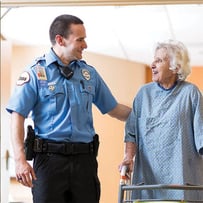Blog
Changing Your Incident Reporting Software: Why an Increase in Reports May Not Mean an Increase in Crime
IGNORANCE ISN’T BLISS
Although increases in reported crime and incidents are never something an organization wants to see, it doesn’t necessarily mean crime is on the rise.Many times, after the implementation of a new incident reporting software, organizations will see an increase in reported crimes. These perceived increases actually represent the real level of crime that was there all along, but went unreported due to weak processes or ineffective software.
A SECOND LOOK
Following the purchase of new reporting software, a savvy organization will take a second look at its current reporting processes and ensure everything is perfect before moving forward. Understandably, though, many organizations are hesitant to do this given the risks and time involved.
Organizations should also use this time to fine-tune how they define certain incident types. For example, an organization may thoroughly define the various types of assault (simple, aggravated, etc.) and properly train officers on which type is appropriate to report, depending on the scenario. This helps to clean up data and make statistics more accurate. It may, however, result in an increase in reported incidents.
NEW SOFTWARE, NEW SYSTEMS, NEW FEATURES
Many organizations from hospitals to casinos also use this switch in software to begin reporting through different systems (such as UCR and NIBRS) that would’ve been too difficult before. Modern incident reporting software come equipped to handle and be 100% compliant with various national and state-wide reporting systems. These reporting systems are important due to their ability to create a standardized system that allows organizations to share and analyze information between agencies and organizations. Software, such as casino surveillance software, will help automate this process and assist with populating content so switching to new reporting systems doesn’t have to be difficult.
Newer safety and incident reporting software usually comes jam-packed with intuitive features that improve user experience, streamline reporting processes, and ultimately save a lot of time. This decrease in time it takes to fill out incident reports means that officers may be able to complete more reports in a day than before and increase the number of incidents reports created in a day.
Sometimes, however, reported incident rates don’t increase due to officers’ reporting but due to the general public’s reporting. A new feature that is becoming more common in safety and incident reporting software is the ability to allow people other than officers report incidents that are occurring through a stripped-down version of the software. With additional eyes and ears to alert officers, the reported rate of incidents is bound to increase.
Although the last thing a safety, security, or law enforcement officer wants to see is an increase in reported crimes/incidents, sometimes it’s needed to see the true level of instances occurring. A problem cannot be tackled without knowing complete statistics. With a full view of the problem at hand, officers can then begin to make a difference and use accurate data to crack down and even predict when incidents will happen. That is when true proactive policing and security strategy can flourish.
More from the blog
View All Posts
5 Steps to Improving Healthcare Worker Well-Being [Plus Bonus Tips]
Read More
How to Save Time and Future Proof Your Healthcare Incident Reporting Software
Read More
Using Incident Reporting Software to Help Reduce HAIs
Read MoreSubscribe to email updates
Stay up-to-date on what's happening at this blog and get additional content about the benefits of subscribing.
